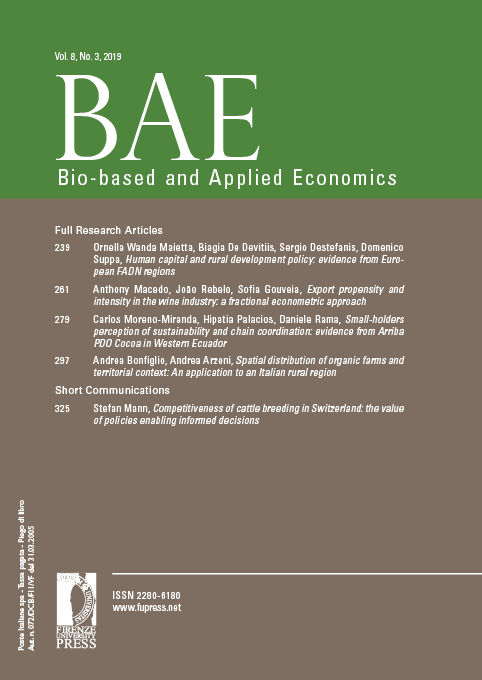Published 2020-11-09
Keywords
- Organic farming,
- environmental pressures,
- rural development policy,
- hierarchical generalised linear mixed model
How to Cite
Abstract
Organic farming is increasingly promoted and supported at several levels for its capability of producing safe food and public goods. It can give an important contribution to attenuating the environmental pressure generated by conventional agriculture. This paper analyses possible determinants of the spatial distribution of organic farms in a rural region of Italy, characterised by several environmental issues. Towards this aim, a quasi-Poisson hierarchical generalised linear model with mixed effects is adopted. Results indicate that there is spatial correlation and that the distribution of organic farming is related to socio-economic, environmental and political factors. In particular, they show that public support could have favoured the spreading of organic farming where there are more problems of erosion but far from the areas where there is intensive agriculture.






